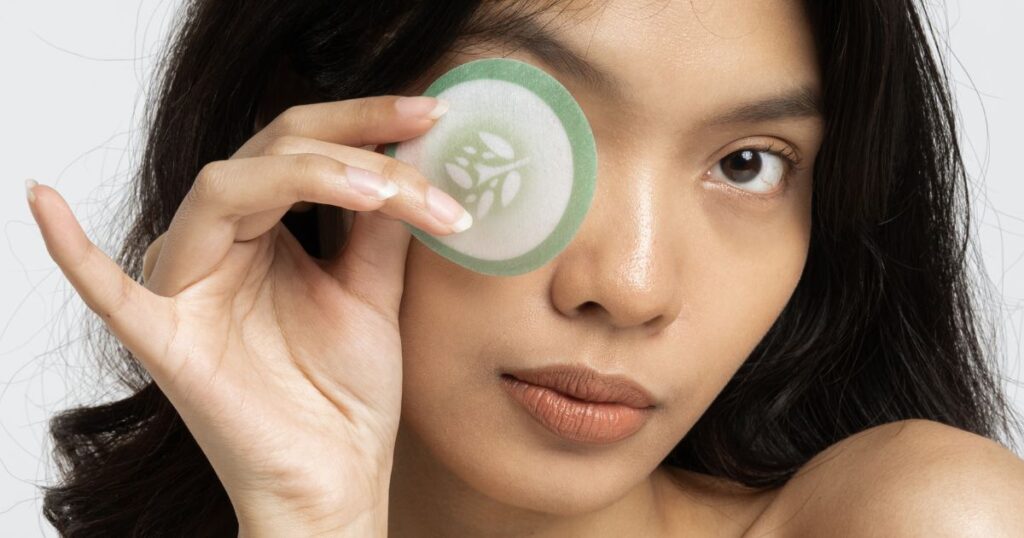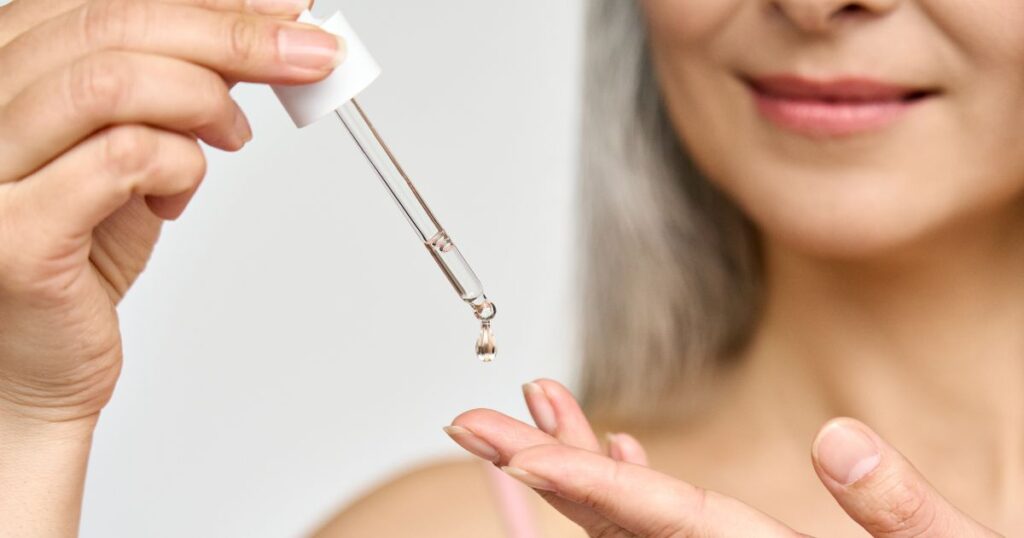Table of Contents - Click to Go
Introduction
Chlorophyll: the pigment that cloaks our planet in verdant hues, a testament to life’s resilience and nature’s ingenuity. Here’s what we’ll uncover about chlorophyll:
- A Vital Pigment in Plants: Chlorophyll is not just any pigment; it’s the lifeblood of the plant kingdom, enabling the critical process of photosynthesis. This process allows plants to absorb energy from light, converting it into the oxygen we breathe and the glucose that fuels life’s tapestry.
- Significance in Photosynthesis: At the heart of chlorophyll’s magic is its ability to capture sunlight and use it to synthesize nutrients from carbon dioxide and water. This miraculous conversion is the foundation of the food chain, sustaining life on Earth.
- Beyond Green: While chlorophyll is renowned for giving plants their green color, its influence extends into human health and the burgeoning world of clean beauty. Its benefits range from detoxifying properties to potential anti-cancer effects, making it a compound of interest across various disciplines.
- A Clean Beauty Ally: In the realm of clean beauty, chlorophyll shines for its antioxidant and anti-inflammatory properties. It’s harnessed in skincare to improve complexion, reduce acne, and promote a radiant glow, embodying the synergy between nature’s gifts and human innovation.
This exploration of chlorophyll invites you to delve into the science behind this green pigment, its health benefits, dietary sources, and its promising applications in clean beauty. Join us as we unravel the mysteries of chlorophyll, understanding why it’s aptly dubbed nature’s green magic.
The Science Behind Chlorophyll

Chlorophyll, at its core, is a complex molecule that serves as the lifeblood of the plant kingdom. It’s the engine driving photosynthesis, enabling plants to convert sunlight into energy. This section delves into the chemical structure of chlorophyll and its pivotal role in nurturing plant life.
- Chemical Structure: Chlorophyll molecules contain a central magnesium ion surrounded by a large, ring-shaped molecule called a porphyrin. This structure is similar to the hemoglobin in our blood, except chlorophyll has magnesium at its heart, while hemoglobin has iron. This similarity underscores the deep connection between all living beings.
- Function in Photosynthesis: Chlorophyll absorbs light primarily in the blue and red spectrum but reflects green, which is why plants appear green to us. It captures solar energy to split water molecules into oxygen, protons, and electrons, fostering the synthesis of glucose from carbon dioxide and water.
- Types of Chlorophyll: Plants contain several types of chlorophyll, each with a unique role:
- Chlorophyll a: The most prevalent type, essential for the photosynthetic process.
- Chlorophyll b: Assists in capturing light energy and transferring it to chlorophyll a.
- Chlorophyll c, d, and f: Found in various algae and plants, playing specialized roles in light absorption.
Understanding the science behind chlorophyll illuminates its indispensable role in our ecosystem. By harnessing sunlight, chlorophyll not only sustains plant life but also supports the entire food web, showcasing the interconnectedness of all living organisms.
Health Benefits of Chlorophyll
Chlorophyll is more than just a pigment; it’s a powerhouse of health benefits. Its impact ranges from detoxification to potentially aiding in cancer prevention. Here’s an overview of the remarkable health advantages associated with dietary chlorophyll:
- Detoxification: Chlorophyll is celebrated for its detoxifying properties. It binds to toxins and heavy metals, aiding in their removal from the body. This process supports liver health and promotes overall detoxification.
- Wound Healing: Historically, chlorophyll has been used to treat open wounds due to its antibacterial properties. It promotes wound healing by reducing inflammation and fighting infection.
- Anti-cancer Properties: Preliminary research suggests that chlorophyll might have anti-cancer effects. It’s believed to bind with potential carcinogens, interfering with their ability to harm the body’s DNA. This protective mechanism could lower the risk of certain cancers.
- Evidence and Recommendations:
- Scientific Support: While research is ongoing, several studies highlight chlorophyll’s potential in promoting health.
- Consumption Advice: Incorporating foods rich in chlorophyll into the diet is recommended. For those considering supplements, consulting with a healthcare provider is advisable to ensure they’re suitable for your health needs.
Chlorophyll’s health benefits are vast, offering detoxification, wound healing, and potential anti-cancer properties. Embracing a diet rich in chlorophyll could be a step towards improved health and well-being.
Chlorophyll in the Diet: How to Get More

Incorporating chlorophyll into your diet is a straightforward path to harnessing its health benefits. Here’s a guide to foods rich in chlorophyll and tips for adding more green to your plate:
Foods Rich in Chlorophyll:
| Ingredient | Chlorophyll Content (Estimated) | Explanation |
| Leafy Greens | High | Spinach, kale, and Swiss chard are among the richest sources of chlorophyll, vital for their deep green color and nutritional value. These greens are not only packed with chlorophyll but also essential vitamins and minerals. |
| Herbs | Moderate to High | Parsley, cilantro, and dill are concentrated sources of chlorophyll, offering a burst of flavor alongside significant health benefits, including detoxifying properties. |
| Green Vegetables | Moderate | Broccoli, green beans, and peas contain chlorophyll, contributing to their green hue and providing a host of nutrients beneficial for health. |
| Algae | Very High | Spirulina and chlorella are superfoods with some of the highest concentrations of chlorophyll available, boasting exceptional nutritional profiles that support overall wellness. |
This table serves as a general guideline to understanding the relative amounts of chlorophyll present in various green foods and their contribution to a healthful diet. The actual chlorophyll content can vary, so it’s beneficial to consume a wide variety of these foods to maximize your intake of chlorophyll along with other important nutrients.
Tips for Incorporating Chlorophyll-Rich Foods:
- Smoothies: Blend leafy greens with your favorite fruits for a nutritious, chlorophyll-rich drink.
- Salads: Mix various greens, herbs, and green vegetables for a chlorophyll-packed meal.
- Cooking: Incorporate green vegetables into soups, stews, and stir-fries.
- Supplements: For an extra boost, consider chlorophyll supplements, but consult with a healthcare professional first.
By making these chlorophyll-rich foods a staple in your diet, you can easily increase your intake and enjoy the myriad health benefits this green pigment offers.
Chlorophyll in Clean Beauty Products

Chlorophyll’s journey from the leaf to the lotion bottle showcases its versatility beyond nutrition, stepping into the realm of clean beauty with promise and potency. Here, we explore how this green pigment beautifies from the outside in, lending its antioxidant and anti-inflammatory properties to skincare and beauty products.
Antioxidant and Anti-inflammatory Properties:
- Antioxidants: Chlorophyll combats free radicals, reducing oxidative stress and preventing premature aging of the skin.
- Anti-inflammatory: It soothes skin irritation and inflammation, making it beneficial for acne-prone and sensitive skin types.
Benefits for the Skin:
- Reducing Acne: By controlling inflammation and possessing antibacterial properties, chlorophyll can help reduce acne outbreaks.
- Improving Skin Tone: Its healing properties support skin regeneration, improving overall skin tone and texture.
Examples of Clean Beauty Products Containing Chlorophyll:
| Beauty Product | Chlorophyll Content (Estimated) | Explanation |
| Facial Serums | Moderate to High | Facial serums with chlorophyll focus on delivering targeted skin benefits, such as reducing inflammation and promoting a healthy glow. The concentration of chlorophyll is designed to maximize absorption and efficacy without irritating the skin. |
| Cleansers | Low to Moderate | Cleansers incorporate chlorophyll primarily for its purifying and soothing properties. The amount is balanced to ensure effectiveness in cleansing the skin while providing a gentle, anti-inflammatory effect. |
| Moisturizers | Low to Moderate | Moisturizers use chlorophyll to hydrate and calm the skin. The concentration is kept at a level that supports skin health, aids in reducing redness, and provides antioxidant benefits without compromising texture or absorption. |
| Face Masks | Moderate to High | Face masks often contain higher levels of chlorophyll to take advantage of its detoxifying and healing properties during the short treatment period. This allows for a concentrated dose that supports skin regeneration and clarity. |
Incorporating chlorophyll into your skincare routine through clean beauty products can leverage its natural efficacy, contributing to a healthier, more radiant complexion. As always, choose products that align with your skin type and concerns to enjoy the full spectrum of benefits this green magic offers.
Conclusion
Chlorophyll, often referred to as nature’s green magic, is a cornerstone of plant life and offers a myriad of benefits beyond its critical role in photosynthesis. This exploration into chlorophyll has revealed not only its fundamental science and the health advantages it provides when included in our diets but also its emerging significance in the clean beauty industry.
Key Takeaways
Given the comprehensive exploration of chlorophyll across its various facets in our article, here are the key learnings summarized:
- Chlorophyll is Essential for Photosynthesis: It’s the pigment that gives plants their green color and plays a crucial role in converting sunlight into energy, vital for plant growth and oxygen production.
- Chlorophyll Offers Health Benefits: Including detoxification, wound healing, and potential anti-cancer properties. Incorporating chlorophyll-rich foods into your diet can contribute to overall health and wellness.
- Dietary Sources are Abundant: Leafy greens, herbs, green vegetables, and algae are excellent sources of chlorophyll. Integrating these foods into your diet can increase your chlorophyll intake.
- Chlorophyll is Beneficial in Clean Beauty Products: Its antioxidant and anti-inflammatory properties make it a valuable ingredient for skin health, aiding in reducing acne and improving skin tone.
- Clean Beauty Products Utilize Chlorophyll: Products such as facial serums, cleansers, moisturizers, and face masks incorporate chlorophyll for its skin-enhancing benefits.
These takeaways encapsulate the essence of our discussion on chlorophyll, highlighting its importance in both the natural world and human health and beauty. Adopting chlorophyll into your lifestyle, whether through diet or skincare, can leverage its myriad benefits for improved well-being and vitality.
FAQs About Chlorophyll
Here are some frequently asked questions about chlorophyll, formatted to help you quickly find the answers you need:
Is Chlorophyll Safe for All Skin Types?
- Yes, chlorophyll is generally safe for all skin types, including sensitive skin. Its anti-inflammatory properties can soothe the skin, making it beneficial in clean beauty formulations.
How Much Chlorophyll Should I Consume Daily for Health Benefits?
- There isn’t a universally recommended daily amount, but incorporating chlorophyll-rich foods like leafy greens into your meals is a healthy practice. For specific dosages, especially if considering supplements, consult with a healthcare provider.
Can Chlorophyll Improve My Energy Levels?
- While chlorophyll itself doesn’t directly boost energy, the overall improvement in health and well-being from consuming nutrient-rich, chlorophyll-packed foods can contribute to increased energy levels.
Does Chlorophyll Really Help with Body Odor?
- Some studies suggest chlorophyll can help neutralize body odor, but more research is needed. It’s believed to work internally to reduce odor when consumed in foods or supplements.
How Does Chlorophyll Aid in Detoxification?
- Chlorophyll binds with toxins and heavy metals, facilitating their elimination from the body. This process supports liver function and promotes detoxification.
What Are the Signs of Chlorophyll Deficiency?
- Chlorophyll deficiency in humans isn’t a recognized condition, as chlorophyll is not an essential nutrient for humans. However, a diet lacking in green vegetables might lead to a deficiency in various nutrients.
Can I Use Chlorophyll Supplements Instead of Dietary Sources?
- Yes, chlorophyll supplements are an alternative to dietary sources, but getting chlorophyll from whole foods is also beneficial due to the additional nutrients they provide. Always consult with a healthcare professional before starting any supplement.
How Does Chlorophyll Interact with Medications?
- Chlorophyll is generally safe, but it can interact with certain medications. It’s important to consult with a healthcare provider if you’re taking medications and wish to use chlorophyll supplements.
Are There Any Side Effects of Using Chlorophyll Topically in Beauty Products?
- Topical use of chlorophyll is usually well-tolerated, but as with any product, a patch test is recommended to rule out sensitivity or allergic reactions.
How Long Does It Take to See Benefits from Consuming Chlorophyll?
- The time frame can vary depending on the individual and the specific benefits sought. Some may notice improvements in skin health or energy levels within a few weeks, while other benefits may take longer to manifest.

